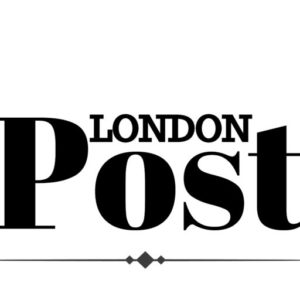A pioneering online map tool showing which roads are most likely to cause river pollution based on collaborative research with environmental charity Thames21, Middlesex University academics and other partners, is now being expanded to include the Upper Thames region after being rolled out in London.
Thames21, the British Geological Survey and other partners launched the online Road Pollution Solutions Tool to support local authorities and communities identify the pollution risks on busy roads.
Road run off is a key source of river pollution which occurs when vehicle operate including engine combustion and oil spills, brake and tyre wear which settle on the surface and are washed into rivers and streams when it rains via the drainage system.
The tool combines pollutant emission factors, local rainfall conditions, surface area and the make-up of traffic on particular routes using official data to predict where pollution hotspots are likely to occur, with results shown on an interactive map. The tool then suggests potential nature based solutions such as wetlands, ponds and raingardens alongside roads to manage pollution before the water is discharging into streams or rivers.
The first online map, which has been partly funded by the Mayor of London, Transport for London (TfL), and the Environment Agency, was introduced in London in 2023 and now highlights more than 280 miles (450km) of the city’s roads that pose a higher risk of road run off pollution.
In total the online road run off river pollution tool now covers roughly 2,400 miles (3,862.3km (10%) of London’s major roads.
The approach is now being rolled out across the whole of the Upper Thames catchment above Dorchester upon Thames, which includes Oxford and sections of motorways such as the M4 and M40. The project, which is funded by the Government Office for Technology Transfer and will last for 18 months from August 2024, is a partnership between the British Geological Society, Thames21 and Imperial College London. This work will also expand the approach to assessing agricultural pollution and particularly how roads transport this pollution to rivers – a major issue in rural areas.
A report into the project as a whole concluded that it has found ‘a significant level of road runoff pollution is contributing to the poor health of our rivers’.
Lian Lundy, a Professor of Environmental Science at Middlesex University whose research has been used in creating the model which underpins the online tool, said: “It is really crucial to tackle road run off pollution and look after our rivers because they are often a source of drinking water, areas for recreation and valuable wildlife habitat. This tool supports authorities who manage rivers to identify where hotspots for road run off river pollution are likely to occur.”
John Bryden, Head of Improving Rivers at Thames21, said: “One of the biggest issues I have seen in my whole career is pollution from roads. There are more than 300 different forms of pollutants which come from everything from the exhaust emissions, to the brakes and the tyres and the degradation of the road. That’s what we are trying to stop getting into the river in the first place. The tool that we’ve come up with takes this incredibly complex issue of road runoff and with just a few clicks tells the authorities what sort of sustainable drainage system can be used to resolve the pollution.”
Enfield Council has been one of the authorities to explore the tool and has used the technology to introduce rain gardens – a planted shallow area of ground that receives run-off from roads reducing the amount of flow entering drainage systems.
Enfield Council’s Cabinet Member for environment, culture and public spaces, Cllr Chinelo Anyanwu, said: “This is a really important tool and it has been great to work with the University to develop and trial new technologies. We are always looking at ways in which we can recognise pollution prevention opportunities and prioritise projects to explore, for the benefit of our residents and to protect local areas.”
Thames21 has now worked with Surrey County Council to introduce the tool into the county and extended it to the Maidenhead and Teddington catchment area.








